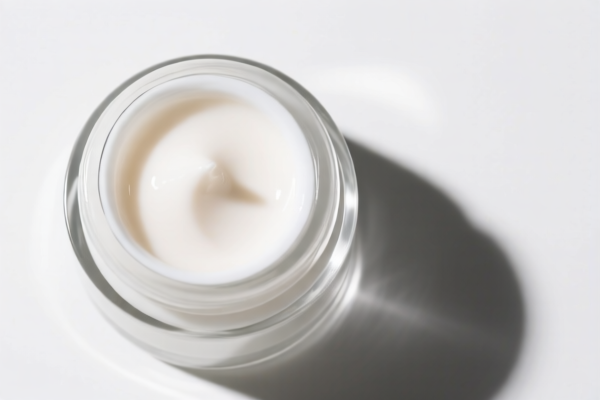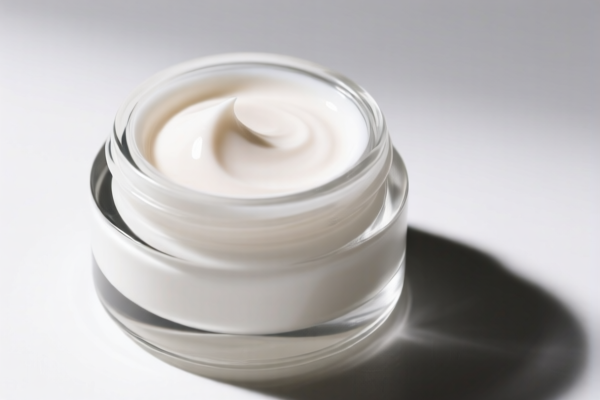| HS Code | Official Doc | Tariff Rate | Origin | Destination | Effective Date |
|---|---|---|---|---|---|
| 1905901041 | Doc | 55.0% | CN | US | 2025-05-12 |
| 1905901049 | Doc | 55.0% | CN | US | 2025-05-12 |
| 2105000500 | Doc | 57.5% | CN | US | 2025-05-12 |
| 2105001000 | Doc | 57.5% | CN | US | 2025-05-12 |
| 2106909980 | Doc | 36.4% | CN | US | 2025-05-12 |
| 1517904500 | Doc | 11¢/kg+37.5% | CN | US | 2025-05-12 |
| 1517905000 | Doc | 11¢/kg+37.5% | CN | US | 2025-05-12 |
| 1516100000 | Doc | 7¢/kg+37.5% | CN | US | 2025-05-12 |
| 1516201000 | Doc | 45.2% | CN | US | 2025-05-12 |
| 1518002000 | Doc | 6.3¢/kg+37.5% | CN | US | 2025-05-12 |
| 1518004000 | Doc | 45.5% | CN | US | 2025-05-12 |
| 3304100000 | Doc | 55.0% | CN | US | 2025-05-12 |
| 3304100000 | Doc | 55.0% | CN | US | 2025-05-12 |
| 3307900000 | Doc | 60.4% | CN | US | 2025-05-12 |
| 3307101000 | Doc | 59.9% | CN | US | 2025-05-12 |




Cream
Cream is a dairy product formed from the higher-fat layer of milk. It is a complex emulsion consisting of fat globules dispersed in a liquid phase, primarily water, along with proteins, carbohydrates, and other minor components.
Material
Cream is derived from milk, typically cow's milk, though it can also be produced from the milk of other mammals like goats, sheep, or buffalo. The fat content differentiates various types of cream. The higher the fat percentage, the richer and thicker the cream.
Purpose
Cream serves a multitude of purposes in culinary applications, as well as in cosmetic and pharmaceutical industries. Culinary uses include enhancing flavor and texture in foods, thickening sauces and soups, and as a base for desserts. In cosmetics, it is used for its moisturizing properties.
Function
The primary function of cream is to provide richness and a smooth texture due to its fat content. It also contributes to the stability of emulsions, preventing separation of ingredients. In whipping, the fat globules entrap air, creating volume and structure.
Usage Scenarios
- Cooking: Added to soups, sauces (e.g., béchamel, hollandaise), stews, and mashed potatoes for increased richness and flavor.
- Baking: Used in frostings, fillings, and as an ingredient in cakes and pastries.
- Desserts: Whipped cream is a common topping for pies, cakes, and fruit. It is also a base for mousses, custards, and ice cream.
- Beverages: Added to coffee, tea, or hot chocolate.
- Cosmetics: Used in lotions, creams, and other skincare products for moisturizing and softening the skin.
Common Types
- Heavy Cream (Whipping Cream): Contains at least 36% milkfat. Ideal for whipping and holding its shape.
- Light Cream: Contains between 20-30% milkfat. Suitable for adding to coffee or sauces, but may not whip well.
- Half-and-Half: Contains between 10.5-18% milkfat. Used for coffee, tea, and some sauces.
- Single Cream (Lightly Whipped Cream): Contains around 20% milkfat. Commonly used in the UK and Ireland.
- Double Cream: Contains at least 48% milkfat. Very rich and thick, commonly used in the UK and Ireland.
- Sour Cream: Produced by fermenting cream with lactic acid bacteria, resulting in a tangy flavor and thicker consistency.
- Crème fraîche: A cultured cream with a slightly tangy flavor and higher fat content than sour cream.
- Mascarpone: An Italian cream cheese made from heavy cream, known for its rich, smooth texture.
Based on the provided information, “cream” can fall under several classifications depending on its specific type and use. Here's a breakdown of relevant HS codes:
-
2106909980: This code covers “Food preparations not elsewhere specified or included: Other: Other: Other: Other: Other cream or milk substitutes”. This is a broad category for cream preparations not fitting into more specific classifications.
- 21: Chapter 21 covers miscellaneous edible preparations.
- 06: Heading 2106 covers food preparations not elsewhere specified or included.
- 90: Subheading 210690 covers other food preparations.
- 99: Further specifies “Other cream or milk substitutes”.
-
1517904500: This code applies to “Margarine; edible mixtures or preparations of animal, vegetable or microbial fats or oils or of fractions of different fats or oils of this chapter, other than edible fats or oils or their fractions of heading 1516: Other: Other: Dairy products described in additional U.S. note 1 to chapter 4: Described in general note 15 of the tariff schedule and entered pursuant to its provisions”. If the cream is a dairy product falling under this description, this code is applicable.
- 15: Chapter 15 covers animal or vegetable fats and oils and their fractions.
- 17: Heading 1517 covers margarine and edible mixtures or preparations of fats or oils.
- 90: Subheading 151790 covers other margarine and preparations.
- 45: Further specifies dairy products described in additional U.S. note 1 to chapter 4.
-
1517905000: Similar to the above, this code covers “Margarine; edible mixtures or preparations of animal, vegetable or microbial fats or oils or of fractions of different fats or oils of this chapter, other than edible fats or oils or their fractions of heading 1516: Other: Other: Dairy products described in additional U.S. note 1 to chapter 4: Described in additional U.S. note 10 to chapter 4 and entered pursuant to its provisions”. This applies if the cream is a dairy product falling under this specific additional U.S. note.
- 15: Chapter 15 covers animal or vegetable fats and oils and their fractions.
- 17: Heading 1517 covers margarine and edible mixtures or preparations of fats or oils.
- 90: Subheading 151790 covers other margarine and preparations.
- 50: Further specifies dairy products described in additional U.S. note 1 to chapter 4.
Regarding HS codes 1517904500 and 1517905000, please note the need to verify whether the cream is described in general note 15 or additional U.S. note 10 to chapter 4, respectively, as this determines the correct classification. Both codes have a total tax rate of 11¢/kg + 37.5%.
Customer Reviews
No reviews yet.